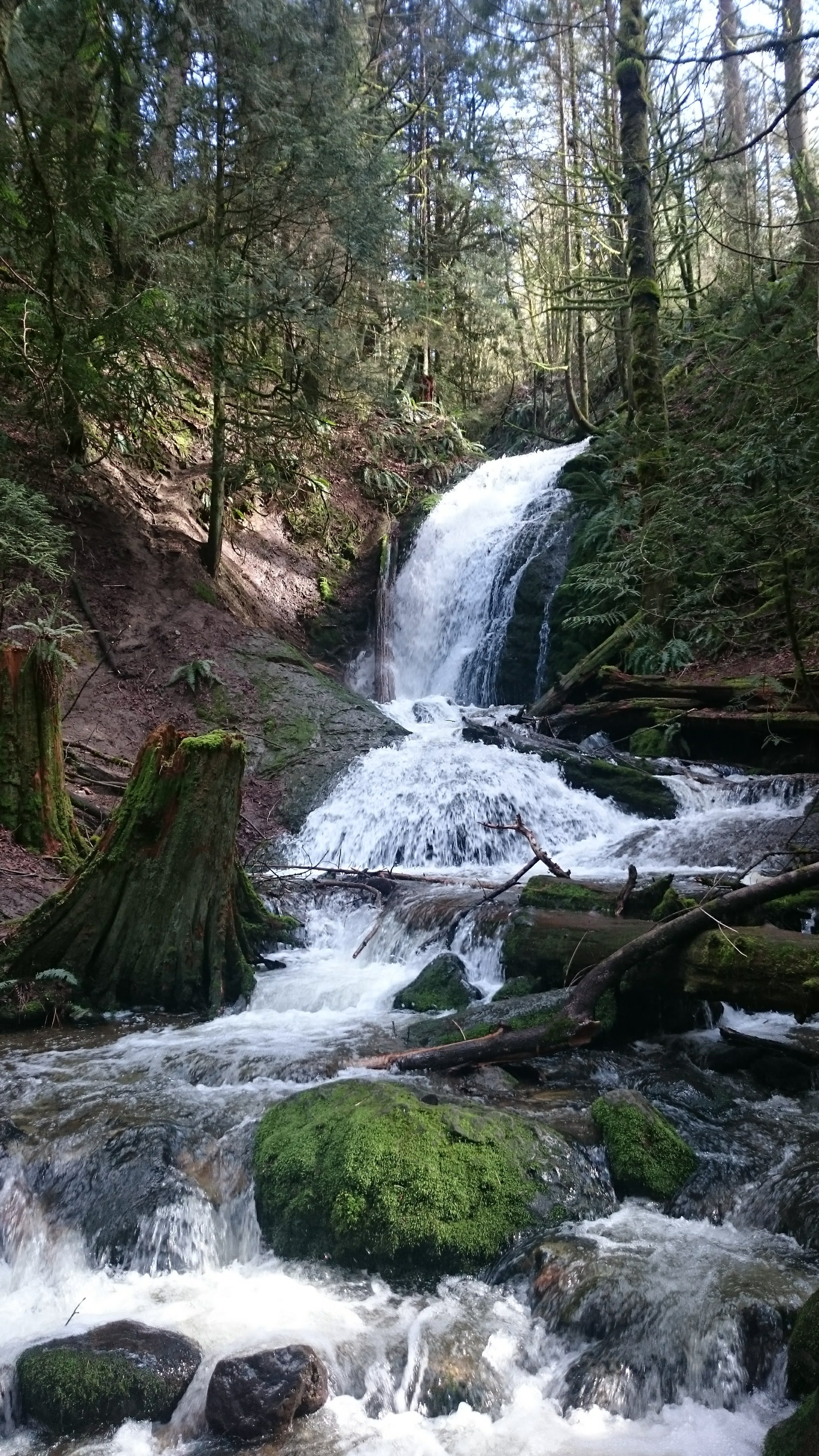King County Parks in the Issaquah Alps
Coal Creek Falls, courtesy of Selena Eon.
By Selena Eon, IATC Board Member
King County manages 205 parks, 175 miles of regional trails, and 32,000 acres of open space, about 3.5% of forested land in the county. In the Issaquah Alps, King County Parks is responsible for a considerable portion of the Alps land, including trail systems on Cougar Mountain, Squak Mountain, Taylor Mountain, Grand Ridge, Rattlesnake Mountain, and even the parcel that is the parking lot to Poo Poo Point. King County is also responsible for the Leafline trail system, which provides pedestrian and bike access throughout the region. What we see as contiguous forestland are patchworks of public lands, managed by the state, county, or cities. To learn more about the four major land managers in the Alps, you can refer to this article.
Taylor Mountain Forest
Taylor Mountain Forest was used by the Native tribes for fishing, hunting, gathering, and as a major transportation link across the Cascades. Homesteaders originally settled near Walsh Lake, although this settlement was burned in a large forest fire in 1910. Logging was common on Taylor Mountain from the 1880s until the 1970s when 60% of the site was clearcut. The Taylor Mountain Forest was acquired by King County in 1997, and in 2007 the current trailhead parking lot was opened.
Although a working forest, Taylor Mountain Forest provides 1,924 acres with 29 miles of trails and gravel road for hikers, horseback riders, and mountain bikers to enjoy. You can learn more about Taylor’s environmentally sound forest management here, which allows responsible timber harvest while conserving wildlife habitat.
Sunset on Taylor Mountain Knob, courtesy of Selena Eon.
Squak Mountain
The name "Squak" comes from Lushootseed, /sqʷásxʷ/, which is also the source of the name Issaquah. Squak Mountain first appears in the history of white settlement after the discovery of coal on the mountain in 1859, with the first mine on the peak in 1862. The dangers posed by abandoned mines are one reason the mountain has not been developed.
Squak Mountain State Park was formed in 1972 with a gift of 590 acres from the Bullitt family. Between 1989 and 2017 King County, with help from the Trust for Public Land, acquired several parcels to create the Cougar-Squak corridor, encompassing 1,043 acres on the southwest side of the mountain.
View of Mount Rainier from Debbie’s View, Squak Mountain, courtesy of Selena Eon.
Cougar Mountain
Cougar Mountain Regional Wildlife Park, Cougar-Squak Corridor, and Squak Mountain State Parks are 5,000 acres of contiguous public land. The Cougar-Squak corridor protects wildlife habitat and a salmon-bearing stream. As you hike Margaret’s Way trail starting at the old Squak Mountain Lodge, you pass through a campground dating to the 1930s. The trail is named for Margaret Macleod, a local conservation advocate.
Archaeological evidence suggests human presence on Cougar Mountain dating back thousands of years. Cougar contained an important Native trail that connected Puget Sound to eastern WA, allowing access to resources and opportunities for trade. In the 1860s, settlers discovered coal on Cougar Mountain, which led to significant mining in what was then called the Newcastle Hills. After WW2, the name changed to Cougar Mountain. In the 1950s-1960s, Cougar Mountain housed a NIKE missile site.
Efforts to preserve Cougar Mountain as a park began with community efforts by Harvey Manning, other advocates, and local officials in the 1970s—aided by dangerous mines left behind on the mountain, which require staying on-trail even today!
Cougar Mountain Regional Wildland Park was formally established in 1983. Today, Cougar Mountain Regional Wildland Park is an eye-popping 3,000 acres, growing slowly as additional parcels are acquired, including recent acquisitions near Talus and the Million Dollar View. Efforts like Save Coal Creek add to public lands connected to Cougar. Cougar has over thirty-five miles of trails winding through mature second-growth forests, streams, wetlands, cliffs, and caves.
Enjoying a new bridge on Cougar Mountain, courtesy of Selena Eon.
If you’d like to help King County care for our existing parklands and make future acquisitions to benefit us all, please vote YES on the August 5th King County Parks Levy. More information about this opportunity to grow our incredible public lands can be found here.




